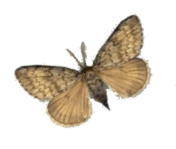Pesticides
- Pesticides Home
- Pesticide Emergencies
- Evaluating Your Pesticide Risk
- Programs/Services
- Pesticide Use in Schools
- Bacillus Thuringiensis (B.t.)
Related Topics
Environmental Health Division
Health Risk Information about Bacillus Thuringiensis (B.t.

About B.t.
- B.t. is a naturally occurring bacteria that is commonly found in soil and food.
- B.t. has been used safely for over 30 years to control insects in the United States, Canada, and other parts in the world.
- B.t. operates through a well-known protein mechanism that causes toxicity in caterpillars (i.e. insect larvae). This mechanism is not known to be present in humans or other mammals.
- B.t. is a biological control method that is an alternative to chemical pesticides. B.t. does not harm most non-target organisms.
- B.t. levels in air decrease significantly within 30 to 90 minutes after an aerial application.
To avoid exposure
B.t. is considered safe for humans, but if you are concerned about a health condition that may be affected by B.t., you can avoid exposures by staying indoors during applications. The Minnesota Department of Agriculture (MDA) notifies residents of an area with a window of time when the application will occur. If you or someone in your home has a medical condition that you believe may be worsened by the application, consult your physician or other health care professional.
To avoid exposures:
- Stay indoors during applications (and for at least 30 minutes afterwards) to allow droplets to settle.
- Wait until the treatment has dried before touching grass or shrubs. If there is residue on playground equipment, sandboxes, benches, or lawn chairs, spray or hose them off with water before use.
- Wash exposed skin with soap and water if direct contact with the spray droplets occurs. If material gets into your eyes, flush with water for 15 minutes.
Contact
For information about B.t. applications, contact the Arrest the Pest Infoline, 1-888-545-6684, or visit the Minnesota Department of Agriculture Integrated Pest Management page.
For more information about B.t. and health risks, see the resources below or in the sidebar.
Resources
- Bacillus Thuringiensis General Fact Sheet (PDF), National Pesticide Information Center
- Reregistration Eligibility Decision (PDF), US Environmental Protection Agency
- R.E.D. FACTS: Bacillus thuringiensis (PDF), US Environmental Protection Agency
- What are Biopesticides?, US Environmental Protection Agency